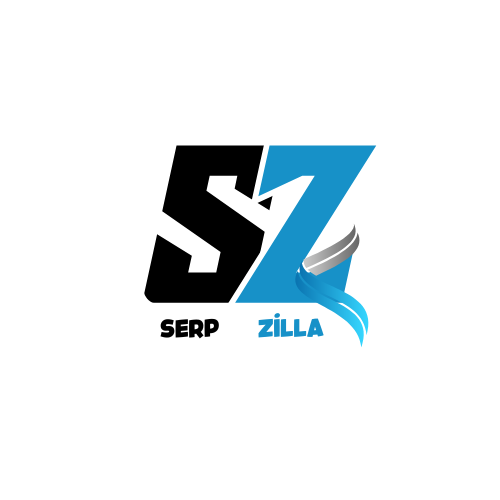Preserving web content has never been more critical. For webmasters and content creators, content changes, deletions, or even entire website removals can wreak havoc. Tools like the Wayback Machine have become essential to archive websites, save digital memories, and keep track of the internet’s evolution. But did you know other apps and tools are offering similar—and in some cases, enhanced—features?
This blog explores Wayback Machine alternatives, their benefits, real-life applications, and how they can empower you to manage your digital assets effectively. By the end of this guide, you’ll discover the best practices for leveraging these tools and get a glimpse into the future of web content preservation.
Understanding the Wayback Machine and Similar Apps
What Is the Wayback Machine?
The Wayback Machine, developed by the Internet Archive in 2001, is an online tool that enables users to view the historical versions of websites. It works like a virtual time capsule, preserving web pages at multiple points in time, and helping users see layout changes, historical information, and deleted content.
Key Features of the Wayback Machine include:
- Website Archiving: Takes snapshots of websites periodically, saving them for future access.
- Historical Research: Track a website’s changes over the years.
- Content Recovery: Retrieve pages that no longer exist online.
How Does It Compare to Other Tools?
While the Wayback Machine is powerful, other platforms offer innovative takes on web content preservation. Here’s a quick comparison among popular alternatives:
1. Archive.today
- Allows users to save specific snapshots of web pages on demand.
- Focuses on permanent entries that are less reliant on periodic captures.
- Great for preserving content before it’s altered.
2. Stillio
- Designed with businesses in mind.
- Automatically archives web pages at scheduled intervals.
- Ideal for competitive tracking or regulatory compliance.
3. Perma.cc
- Simplifies archiving for researchers, legal professionals, and academics.
- Moves beyond websites to include additional online references.
- Prevents broken links in research publications.
4. WebCite
- Primarily academic-focused, preserving cited web pages for online scholarly works.
- Simple citation management integrated with archiving.
Each tool caters to different needs, so knowing which fits your goals best is vital.
Benefits for Webmasters and Content Creators
For webmasters and content creators, content loss can lead to potential revenue drops, loss of audience trust, or legal complications surrounding intellectual property. Here’s how tools like the Wayback Machine and its alternatives can help mitigate these risks:
1. Backup and Restoration of Websites
Websites may go down unexpectedly due to hosting issues, cyberattacks, or improper updates. Archived versions act as reliable backups, saving you from costly downtimes or permanent content loss.
2. Protect Intellectual Property and Ensure Content Integrity
Webmasters frequently deal with copied or plagiarized content. Using archived web pages, you can verify and protect your original posts, providing evidence when filing Digital Millennium Copyright Act (DMCA) takedown notices.
3. Engage in Competitive Analysis
Some archiving platforms allow businesses to monitor competitors. Keeping records of past products, campaigns, or price changes aids market analysis for strategic advantage.
4. Legal and Regulatory Compliance
For businesses in regulated sectors, maintaining historical records ensures compliance. Platforms like Stillio or Perma.cc assist in keeping tamper-proof records of policies and other website features.
Practical Uses and Real-World Case Studies
Case Study 1: Restoring Lost Blog Posts
A well-known travel blogger faced a website crash that erased two years’ worth of articles. Using the Wayback Machine’s historical records, the blogger was able to recover almost all the posts and rebuild the site.
Case Study 2: Competitive Tracking for E-commerce
An e-commerce company used Stillio to take scheduled web page snapshots of their competitors’ pricing strategies. This helped them adjust their pricing dynamically, leading to a 15% increase in sales.
Case Study 3: Securing a Legal Advantage
A small business owner suing for intellectual property theft used snapshots from the Wayback Machine to prove their design was published first. The preserved record was a pivotal piece of evidence leading to a favorable judgment.
Best Practices for Utilizing These Tools
To make the most of archiving tools, here are some actionable tips:
- Schedule Regular Backups: Tools like Stillio automate this process, so you always have the latest snapshot of your website.
- Use Multiple Platforms: Combine tools like Archive.today and the Wayback Machine to increase the chances of fully archived content.
- Organize Your Archives: Label and categorize your archives to retrieve desired snapshots quickly.
- Monitor Competitors Efficiently: Use archiving tools to keep track of industry competitors, especially for identifying new trends.
- Leverage Metadata: Utilize the metadata stored in archives for SEO insights and enhanced content strategies.
The Future of Web Content Preservation
Web content archiving is continuously evolving. Highly adaptive AI-powered technologies are starting to enhance the efficiency, scalability, and accuracy of web-preservation systems. Here’s what we might see in the future:
1. AI-Driven Deep Archiving
AI tools can play a pivotal role in customizing and deep-scanning websites for more tailored, robust snapshots. These tools could identify patterns or trends, helping businesses recognize opportunities early.
2. Blockchain for Immutable Archives
Blockchain technology can ensure that archived data remains tamper-proof. This will likely be useful for preserving legal documents, digital marketplaces, and academic research.
3. Increased Accessibility and Collaboration
Web content preservation will involve more user-friendly interfaces, allowing anyone—from individuals to small businesses—to archive content effectively. Platforms may also integrate collaborative features, letting teams work on archives together.
Why Webmasters and Content Creators Should Start Archiving Now
Content on the internet is fleeting—pages disappear, links break, and data is constantly updated. Tools like the Wayback Machine and alternatives such as Stillio, Archive.today, Perma.cc, and WebCite offer an arsenal of capabilities to combat these challenges.
For webmasters and content creators, these tools don’t just preserve history; they protect years of hard work, reinforce legal integrity, and unlock strategic advantages.
Conclusion
The importance of archiving web content cannot be overstated in an era of constant digital change. Whether you’re safeguarding your website, tracking updates, or preserving critical information, using tools like Wayback Machine and its alternatives provides peace of mind and a strong foundation for the future. By investing time in building a robust archiving strategy, webmasters and content creators can ensure their work remains accessible, insightful, and resilient for years to come. Start archiving today to protect both your content and your legacy.
Start preserving your digital presence today. Explore these tools, experiment, and build a fail-safe system to future-proof your website and your vision.

